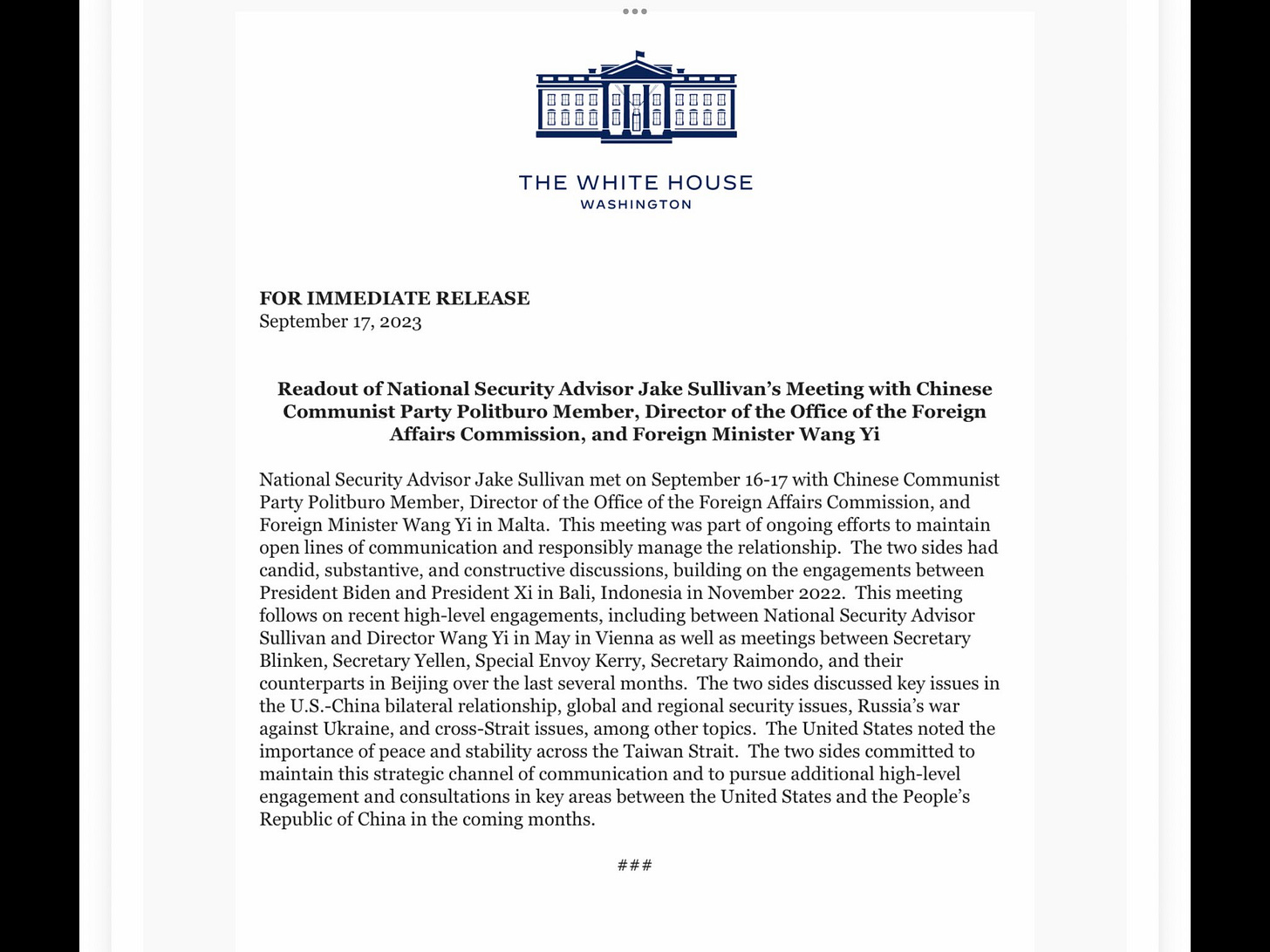The China Puzzle
Assessing Macro Risks
Diplomacy is Back
Over the weekend, and unannounced, National Security Advisor Jake Sullivan and China’s Foreign Minister Wang Yi met in Malta. The official US readout is here:
Speculation was that this was preparation for a possible Xi-Biden Summit at the APEC meeting in San Francisco in November.
This week Sullivan and Secretary of State Antony Blinken both met with China’s Vice President Han Zheng on the sidelines of the UN General Assembly meetings in New York, providing additional momentum for a summit. Wang Yi will now visit Washington next month, becoming the highest ranking Chinese official to visit the capital since the pandemic began.
Following on Secretary of Commerce Gina Raimondo’s successful visit to Beijing, this is all good news, signifying that critical communications channels are functioning. However serious challenges remain for both Xi and Biden. Biden’s weak polling and Xi’s unexpected cabinet shifts mean both sides might not be negotiating from positions of domestic strength.
The official revelation that the balloon shootout that scuttled Blinken’s trip to Beijing earlier this year was in fact a false alarm is another signal that tensions have eased. What is fueling US-China diplomatic rapprochement?
Economic Growth in the US and China
I think the answer is simple. The Chinese economy is not recovering as rapidly as was expected, while prospects for the US economy seem to be improving. Chinese consumers are exhibiting a different behavior pattern than American consumers post-Covid. China’s “Dual Circulation” is not working and dependence on exports has risen. “Common Prosperity” has come to mean less prosperity for everyone.
Lack of Chinese consumer confidence could mean that US GDP growth could exceed China’s this quarter. The Atlanta Fed Nowcast on September 14th estimates 3rd quarter US GDP growth at 4.9%. China’s 2023 target is an optimistic 5%.




